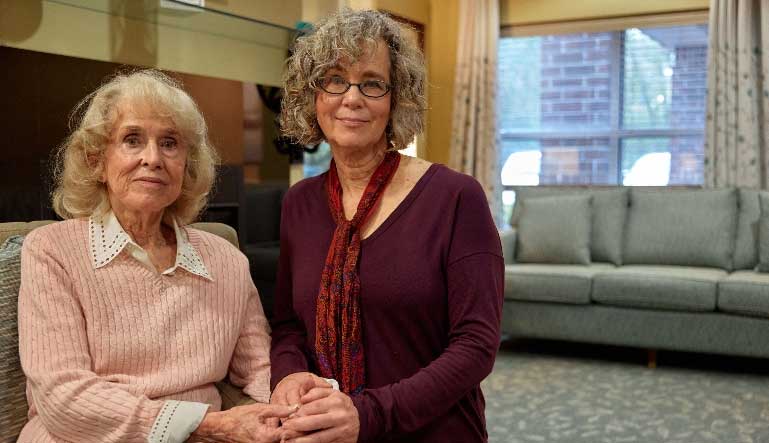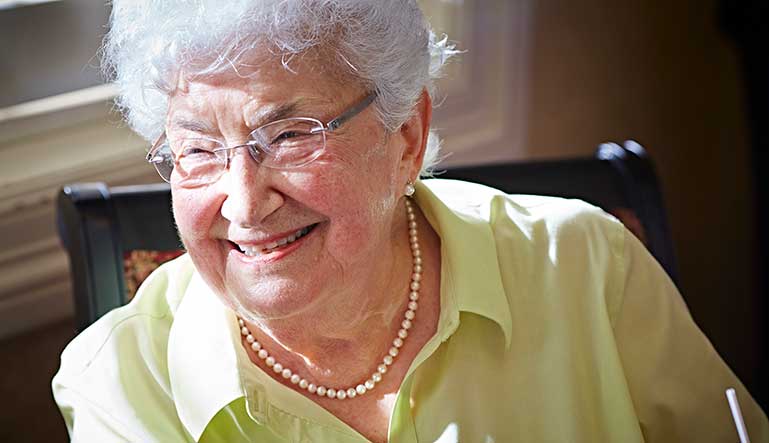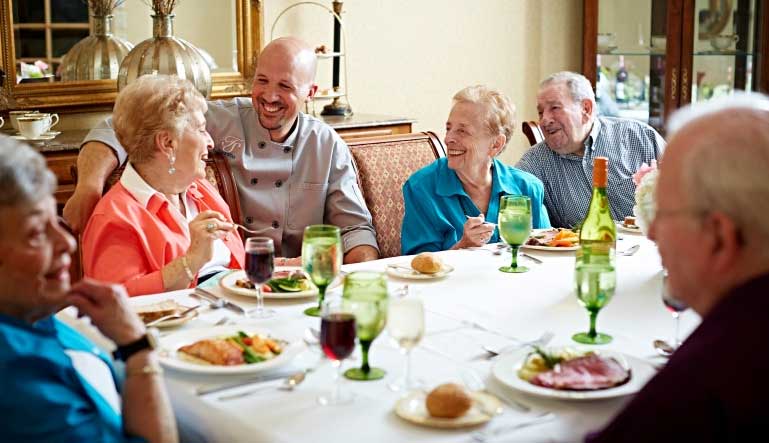As your parents grow older and their need for assistance increases, it may be up to you to begin to explore options for their next stage in life. Your goal is to find a senior care solution that allows your parents to age with grace and live their best life. Unfortunately, wanting the best for your parents and knowing how to find it are two very different things.
For many seniors, an assisted living community offers the best of all worlds: independence, personal care, life enrichment, and around-the-clock support.
1. Assisted Living Communities Aren’t Nursing Homes
Some people have outdated ideas about senior housing. They often think an assisted living community is just a fancier version of a nursing home. In fact, assisted living communities are a completely different level of care. These communities are thoughtfully designed to meet the needs of older adults. The ultimate goal of an assisted living community is to provide residents with just the right amount of care and support to safely maintain their independence.
2. Residents Set Their Own Daily Schedules
One common fear shared by many when considering senior living is the potential loss of independence. However, contrary to this belief, residents living in assisted living communities have the advantages of privacy and control.
Your parents would have the freedom to plan how they will spend their days according to their preference and lifestyle. They would have the opportunity to engage in activities they enjoy at their own pace, which can include morning walks, having an evening tea, spending time with friends and family, or adopting a new hobby.
Plus, you do not have to worry about their well-being, as the professional caregivers are more than ready to offer assistance whenever needed.
3. Assisted Living Communities Each Have Their Own Personality
Once you begin exploring assisted living communities, you’ll quickly notice that each has its own distinct personality, reflecting the values, culture, and ambiance that make them special.
From the design of the living spaces to the variety of activities and amenities offered, every community offers a distinct experience tailored to the needs and preferences of its residents. Some may emphasize a vibrant, social atmosphere with frequent events and communal dining, while others might focus on providing a serene, homelike environment with plenty of opportunities for relaxation and personal reflection.
These differences are more than just about aesthetics and facilities; they shape the daily experience and culture of each community. Your goal should be to help your parents find one that looks and feels like a place they would be comfortable calling home.
Learn more about the Five Star Experience.
4. Features, Services, and Amenities Vary Widely
As mentioned above, every assisted living community has its own unique features, services, and amenities. Those little details can make a big difference in how your parents fit in the community.
Some communities may offer luxurious amenities, including state-of-the-art fitness centers, fine dining, and spa services, while others may emphasize the beauty of outdoor spaces with lush gardens, walking trails, and serene courtyards. Socially, some communities might boast a vibrant calendar filled with events, clubs, and group activities that encourage interaction and build strong bonds among residents. Transportation and concierge services also vary from community to community.
The key is to look for communities that have your preferred amenities and customized programs that can add comfort to the lives of your loved one.
5. Life Enrichment Programs Improve Quality of Life
Another common misconception about assisted living is that residents will have little to do and may experience boredom. This, however, is further from the truth. Many communities offer a wealth of life enrichment programs that can improve the quality of life for their residents. Your parents will get a chance to rediscover old passions and explore new interests.
At Five Star Senior Living, our assisted living communities offer the EPIC Living program that focuses on the four pillars of wellness: emotional, physical, intellectual, and community. Five Star residents can engage in a variety of activities designed to nurture the body, mind, and spirit. Some of the examples include:
- Improvement of physical well-being through exercise classes, gardening, or yoga sessions.
- Active engagement of mind is achieved by joining book clubs or engaging in stimulating puzzles.
- Breaking the bounds of creativity by creating art or attending music classes.
- Strengthen social connections and community bonds by participating in game nights, eating dinner in the community dining room with friends, or participating in a club or volunteer event to find new friends that share similar interests and passions
- Nurture spiritual growth through religious services, meditation practices, or spiritual discussions
6. Pets are Often Welcome
We know how important four-legged family members are, which is why some assisted living communities, including most Five Star Senior Living communities, welcome pets.
However, pet policies can vary from one community to another. Be sure to talk with each community your parents might be considering to learn what restrictions, if any, they have regarding the type, breed, size, and weight of any pets that may also be making the move.
7. Assisted Living Costs
So, how much does assisted living cost? The short answer is that it varies based on a number of factors including location, accommodation type, amenities offered, and level of care required. However, generally speaking assisted living can be a cost-effective option compared to the potential expenses of living independently.
Unlike traditional at-home care, assisted living communities offer a comprehensive range of services for one monthly fee. This means you avoid multiple individual costs that can quickly add up, such as those for home health aides, meals, home modifications, transportation, and other essential care services.
8. Signs It’s Time to Consider Assisted Living
The most important thing to understand is when your parents need assisted living. Here are some signs it may be time:
- Increased difficulty with daily living activities
- Safety concerns like frequent falls or difficulty using stairs
- Changes in nutritional intake can lead to weight loss or weight gain
- Withdrawal from social activities or decreased interest in hobbies or relationships
- Increased mood swings or anxiety
- Struggling to manage household tasks, finances, or medication
- Forgetting important information, events, or people
- Difficulty making decisions or following basic instructions
If you notice a decline in your parent’s ability to perform daily tasks or manage their overall well-being, it is a sign to consider assisted living options.
Visit an Assisted Living Community Near You
With more than 130 communities across 28 states, there is likely a Five Star Senior Living community near you or your parents. Contact us today to learn more about the benefits of assisted living and to schedule a tour.
Contact Us Today
"*" indicates required fields


![How Much Does Assisted Living Cost? [2025]](https://www.fivestarseniorliving.com/wp-content/uploads/2022/07/cost-of-assisted-living-blog-hero.jpg?ver=1710517178)






